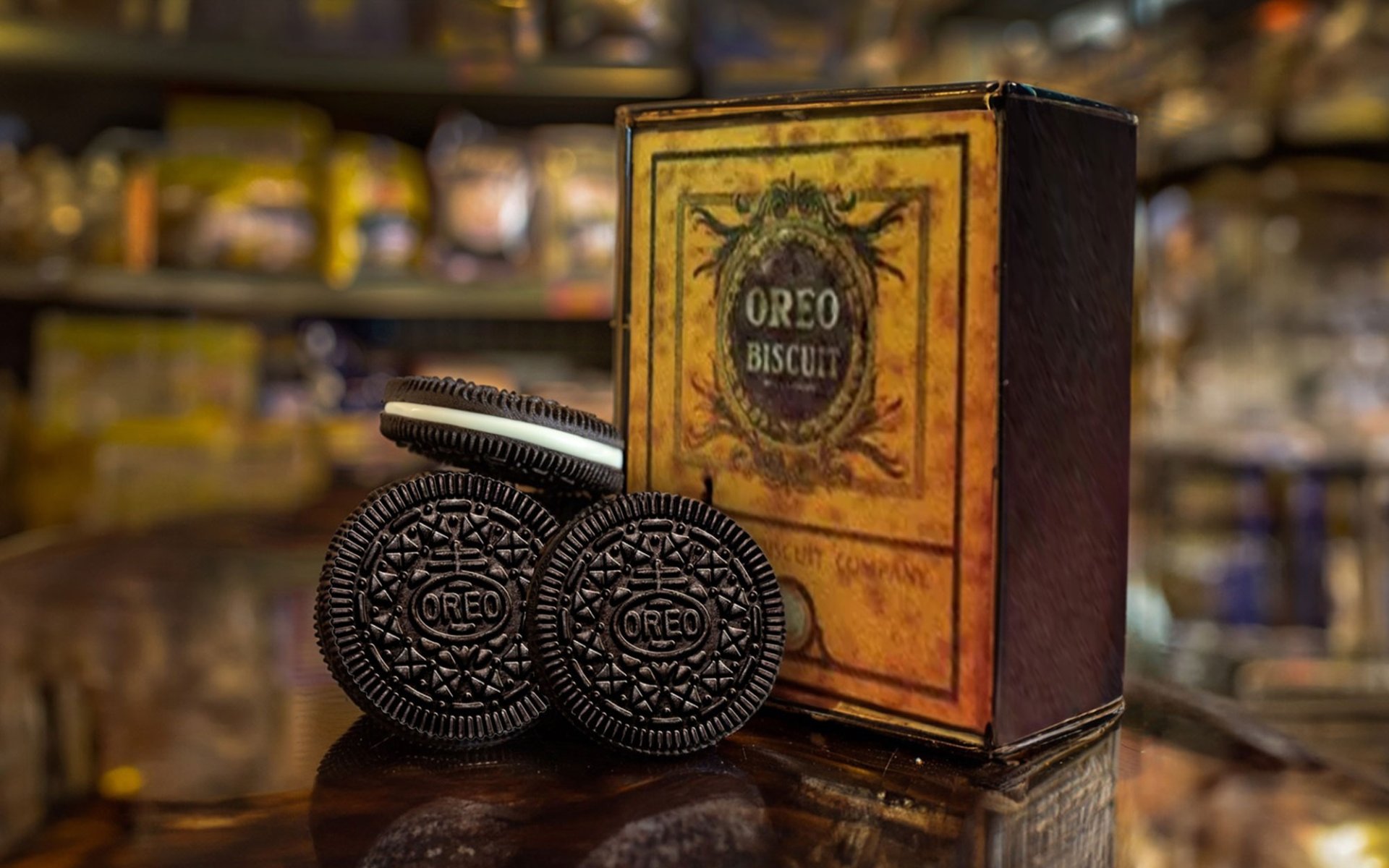Oreo

Twist, Lick, Dunk. This iconic slogan of Oreo has remained effective for over 100 years. With its delicious taste combined with marketing strategies that adapt to the times, Oreo has achieved immense success, becoming one of the most popular cookie brands globally. Today, Rimping Supermarket invites you to trace the history of this legendary cookie.
The Origin of a Legend: Nabisco and the Rivalry with Hydrox (1898 - 1912 AD)
The story of Oreo began in the early 20th century. It was invented by the National Biscuit Company, also known as Nabisco, which was founded in 1898 AD in New York City, USA.
Originally, this company produced Barnum's Animals Crackers, sold in small boxes designed to resemble circus animal cages, with a string attached so they could be hung on Christmas trees. They were first launched in 1902 AD.
Over time, a competitor company emerged, named Sunshine Biscuits Company. This company produced a dark, two-piece sandwich cookie with a cream filling in the middle called Hydrox, which was launched in 1908 AD and became very popular.
Seeing this, Nabisco had the idea to produce a superior sandwich cookie. They took inspiration from their competitor to create their own cream-filled cookie, first launched in 1912 AD under the name Oreo Biscuit. The origin of the name is still unclear. Some sources suggest it comes from a French word meaning gold, referring to the first packaging which was gold-colored.
Other sources suggest it might be a combination of words, taking re from cream and placing it between the two os from chocolate to mimic the sandwich cookie structure, thus forming the name OREO. However, the name was changed several times. It was first changed to Oreo Sandwich in 1921 AD, then to Oreo Crème Sandwich in 1948 AD, and finally, the current name Oreo Chocolate Sandwich Cookies in 1974 AD.
Turning the Tide: Cream Filling and Packaging Innovation Lead to Number 1 Sales
The first Oreos were sold to a grocery store in Hoboken, New Jersey, on March 6, 1912 AD. The packaging was a large golden rectangular box, similar to traditional cookie tins in Thailand. Grocery stores typically resold them to consumers by weight, in bags.
Due to its strong resemblance to Hydrox cookies, Oreo's initial sales were not very strong, as Hydrox cookies dominated the market at the time. Consequently, Oreo had to find a way to improve its product. Then, Samuel J. Porcello, an American food scientist who had worked for Nabisco for a long time, developed the white Oreo cream filling, which had a superior taste. Along with this, the packaging was changed to a smaller rectangular box. This led to Oreo's rapid popularity, surpassing its competitor in sales and becoming the best-selling cookie in the United States.
New Flavors and the Legendary Slogan: Twist Lick Dunk (1923 AD - Present)
With overwhelmingly positive reception, the company quickly expanded its product line by introducing new flavors, starting with a lemon cream flavor that had yellow cream, unlike the original white cream. However, this flavor was not very popular and was later discontinued. Subsequently, the company continued to produce new flavors such as chocolate, white chocolate, birthday cake, and strawberry, all of which gained significant popularity.
In 1923 AD, Oreo launched its legendary advertisement, Twist, Lick, Dunk, inspired by consumer behavior. The company observed that most consumers preferred to eat Oreos in this manner. As a result, this slogan became memorable for many people for over a hundred years.
Global Expansion and Product Innovation (1990 AD - Present)
In the 1990s, the company began expanding its market internationally, leading to an increase in Oreo's popularity. Not only that, but the company also developed new flavors tailored to local tastes, such as green tea flavor available only in China and Japan, dulce de leche flavor available only in Argentina, and blueberry cream flavor available only in China, Indonesia, Malaysia, Singapore, Thailand, and Vietnam, among others.
Beyond developing new flavors, Oreo has consistently evolved and adapted its products to modern times. Examples include the smaller Mini Oreo, the thinner Oreo Thins, Oreo Wafer, and Oreo O's Cereal, which was first launched in 1998 but discontinued in other countries by 2007, now officially available only in the United States.
In March 2012, Time magazine reported that Oreo was sold in over 100 countries worldwide, and since its launch in 1912 AD, over 450 billion pieces of Oreo have been produced globally, generating more than 1 billion dollars in revenue annually.
Today, Oreo is more than just a regular cookie. With its delicious taste and versatility, Oreo stands out in other dessert industries as well, such as Oreo ice cream, Oreo cheesecake, Oreo milkshakes, and many more.


